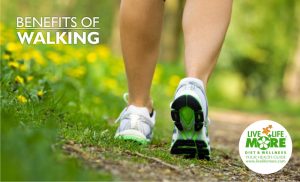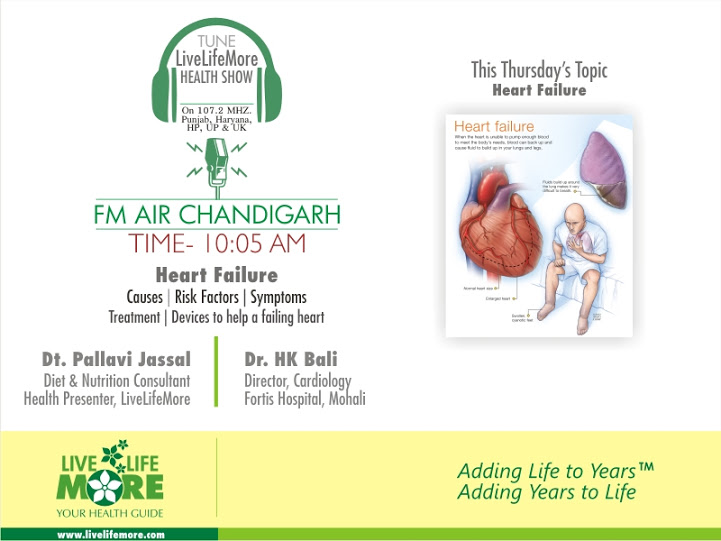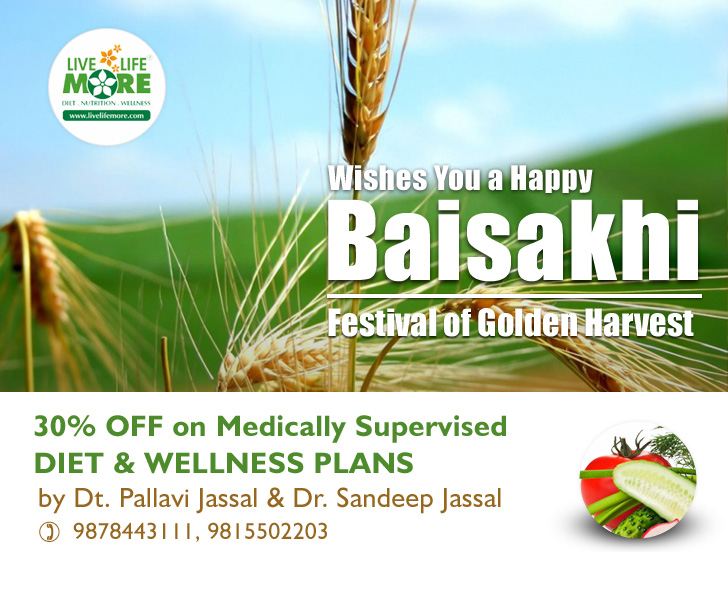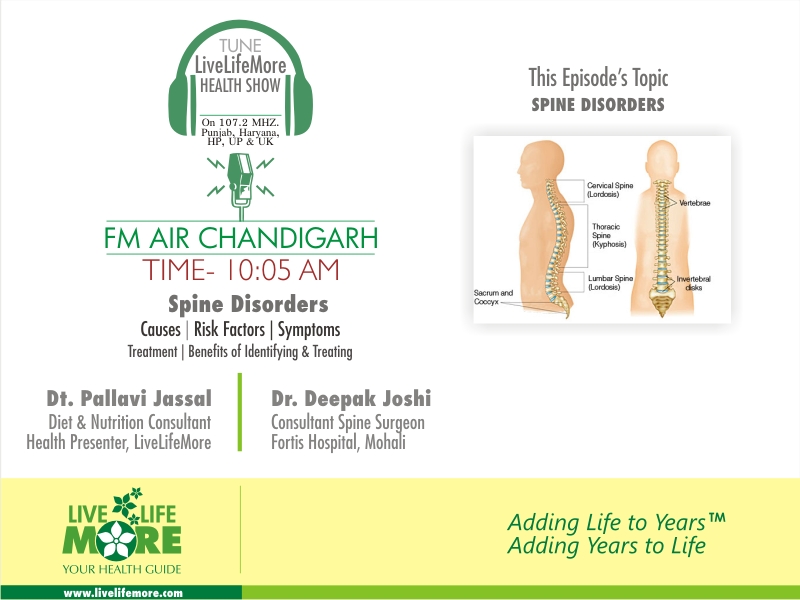
In this episode of LiveLifeMore Health Show, noted Health Presenter & Nutritionist Dt. Pallavi Jassal discusses ‘Heart Failure’ with eminent cardiologist Dr. HK Bali.
Heart failure, also known as congestive heart failure, occurs when your heart muscle is not able to pump enough blood it should so that the needs of the body can be fulfilled. Some conditions, such as narrowed arteries in your heart (coronary artery disease) or high blood pressure, gradually may lead your heart muscle to become too weak or stiff to fill and pump with optimum efficiency.
The good news is that getting diagnosed with heart failure is not a ‘DEATH SENTENCE’ as commonly thought. But, the bad news is that not all the conditions that lead to heart failure can be reversed, but treatments can improve the signs and symptoms of heart failure and can potentially help the patient live longer.
Certified Lifestyle & Wellness Consultant, Dr. Sandeep Jassal says that professionally guided lifestyle changes – such as a regular exercise regime, reduction in consumption of salt in your diet, stress and weight management can improve the patient’s quality of life.
One way to control heart failure is to control conditions that cause heart failure, such as coronary artery disease, high blood pressure, diabetes or obesity.
However, once diagnosed, there are some devices which can help the patient lead a near normal life & also prolong the life too. These technological breakthrough devices are called Pacemakers, ICDs (Implantable Cardioverter Defibrillators), Combo Devices ( which have the features of both Pacemakers as well as ICD). Let us tell you a bit more about these devices.
Pacemaker: A pacemaker is a small device that can be placed in the chest wall or abdominal wall and it helps in controlling abnormal heart rhythms. This device uses low-energy electrical currents to prompt the heart to beat at a normal rate. Pacemakers are used to treat arrhythmias. Arrhythmias are problems with the rate or rhythm of the heartbeat. During an arrhythmia, the heart can beat too fast, too slow, or with an irregular rhythm.
Implantable Cardioverter Defibrillators (ICD) : An ICD is an appropriate device for heart-failure treatment when the person is considered to be a high risk of dying from an abnormal heart rhythm called Sudden Cardiac Arrest or Sudden Cardiac Death. It is a small device which can be implanted in the chest and continually monitors the heart’s rhythm. Whenever the ICD senses an abnormal heart rhythm, it activates an internal electric shock to the heart which is equivalent of being shocked with paddles outside the body that hopefully restores a normal heart rhythm. In a way it is like moving aroud with your own Cardiologist with in your own body.
Cardiac Resynchronization Therapy (CRT): Cardiac resynchronization therapy is a new and promising treatment recommended in some patients with heart failure. in whom the electrical signals that control the pumping of the different heart chambers becomes erratic, making the heart unable to pump blood efficiently.
CRT devices are capable of restoring the coordination between the two sides of the heart and improving its function by delivering electrical impulses to both the right and left ventricles — the two large, main pumping chambers of the heart.
Learn more & live life more…

Good information that can help you Live Life More…
Ever wondered what happens to your body when you start walking as a routine?
Here’s a minute-by-minute rundown of the amazing chain reaction walking and exercise has upon your body, it’s truly amazing!
Minutes 1 to 5
Your first few steps trigger the release of energy-producing chemicals in your cells to fuel your walk. Your heart rate revs-up from about 70 to 100 beats per minute (bpm), boosting blood-flow and warming muscles.
Any stiffness subsides as joints release lubricating fluid to help you move more easily. As you get moving, your body burns 5 calories per minute, compared with only 1 per minute at rest. Your body needs more fuel and starts pulling from its carbohydrates and fat stores.
 Minutes 6 to 10
Minutes 6 to 10
Heartbeat increases and you’re burning up to 6 calories a minute as you pick up the pace. A slight rise in blood pressure is countered by the release of chemicals that expand blood vessels, bringing more blood and oxygen to working muscles.
Minutes 11 to 20
Your body temperature keeps rising, and you start to perspire as blood vessels near the skin expand to release heat. As your walk becomes brisker, you’ll be burning up to 7 calories a minute and breathing harder. Hormones such as epinephrine and glucagon rise to release fuel to the muscles.
Minutes 21 to 45
Feeling invigorated, you start to relax as your body releases tension, thanks in part to a dose of feel-good chemicals such as endorphins in your brain. As more fat is burned, insulin (which helps store fat) drops… excellent news for anyone battling excess weight or diabetes.
Minutes 46 to 60
Your muscles may feel fatigued as carbohydrates stores are reduced. As you cool down, your heart rate decreases and your breathing slows. You’ll be burning fewer calories but more than you were before you started. Your calorie burn will remain elevated for up to 1 hour.
All this happens without a single conscious thought from us – the human body is amazing.
So, keep walking…stay blessed & Live Life More.
Kindly forward to as many as possible
Issued in public interest & edited professionally by experts.


On Baisakhi- The festival of Golden Harvest…Live Life More offers flat 30% off on all new enrollments in Diet & Wellness Consultations
Baisakhi (also called Vaisakhi ) is the festival of golden harvest. We, at LiveLifeMore wish you a happy & prosperous year ahead blessed with glowing health & wellness. We also bring forward the offer of FLAT 30% off on all our consultations for Weight Loss, Weight Gain, Thyroid Diseases, Kidney & Liver Diseases, many more medical conditions under expert supervision.

If you suffer from back pain, you may adopt an unnatural posture to try to limit movements that you fear will create potential pain. However, unless there is a fracture or other serious problem, try not to take on an unnatural or stiff posture.
Talk to a Spine Specialist instead.
See When Back Pain is a Spine Compression Fracture or a major spine problem for the spine surgeon’s valuable opinion…
Be on the lookout for any of the following possible warning signs of poor posture:
-Back pain that is worse at certain times of the day or week
-Pain that starts in the neck and moves downwards into the upper back, lower back and extremities
-Pain that goes away after switching positions while sitting or standing
-Sudden back pain that is experienced with a new job, a new office chair, or a new car
-Back pain that comes and goes for months
If any of these warning signs apply to you, take a moment to learn more about SPINE DISORDERS in this LiveLifeMore Health Show with Dietitian Pallavi Jassal talking to Dr. Deepak Joshi, Senior Spine Surgeon from Fortis Hospital, Mohali.
Next on your list: begin a more active lifestyle. While this is a big step, it doesn’t have to be a hard one. No matter your age or physical ability, starting an exercise program is a no-brainer. You’ll get healthier, live longer and improve the quality of your life.
Science can keep us alive well into our 80s and 90s, but the quality of those years in future is dependent upon how well we take care of ourselves…now in our present times.
So, the sooner we start exercising, the sooner we start burning calories, building bone and muscle and feeling more comfortable in our bodies. But what exactly does this mean? How much exercise and what kinds are the most beneficial and the most tolerable?
What we all should know is that exercise is not merely a repetitive motion of body parts. It’s much more complex than that.
Well, it’s not hard at all. If you have a few hours a week to dedicate to your body, you can have all the benefits of an active lifestyle. We will break down the four elements of an exercise plan and show you how much exercise you need to get in shape. And you can accomplish this in under four hours a week.
The four components of a longer, better and active life:
1. Aerobic Training: This improves lung and heart efficiency, utilizes calories, builds bone and muscle to a limited degree, increases levels of “good” natural chemicals (e.g. endorphins), elevates good blood lipids (HDL) and decreases the bad ones (LDL and cholesterol).
2. Strength Training: Increases lean muscle and therefore improves body composition, increases bone density, increases resting metabolic rate, firms and gives contour to the body, and of course, makes you a stronger person (inside and out!)
3. Flexibility Training: Increases the length and elasticity of muscle-tendon units, decreases the soreness associated with other forms of training and prevents injury in both training and daily life.
4. Relaxation Training: Decreases anxiety, decreases blood pressure, increases concentration, improves posture and provides a ton of other great benefits!







